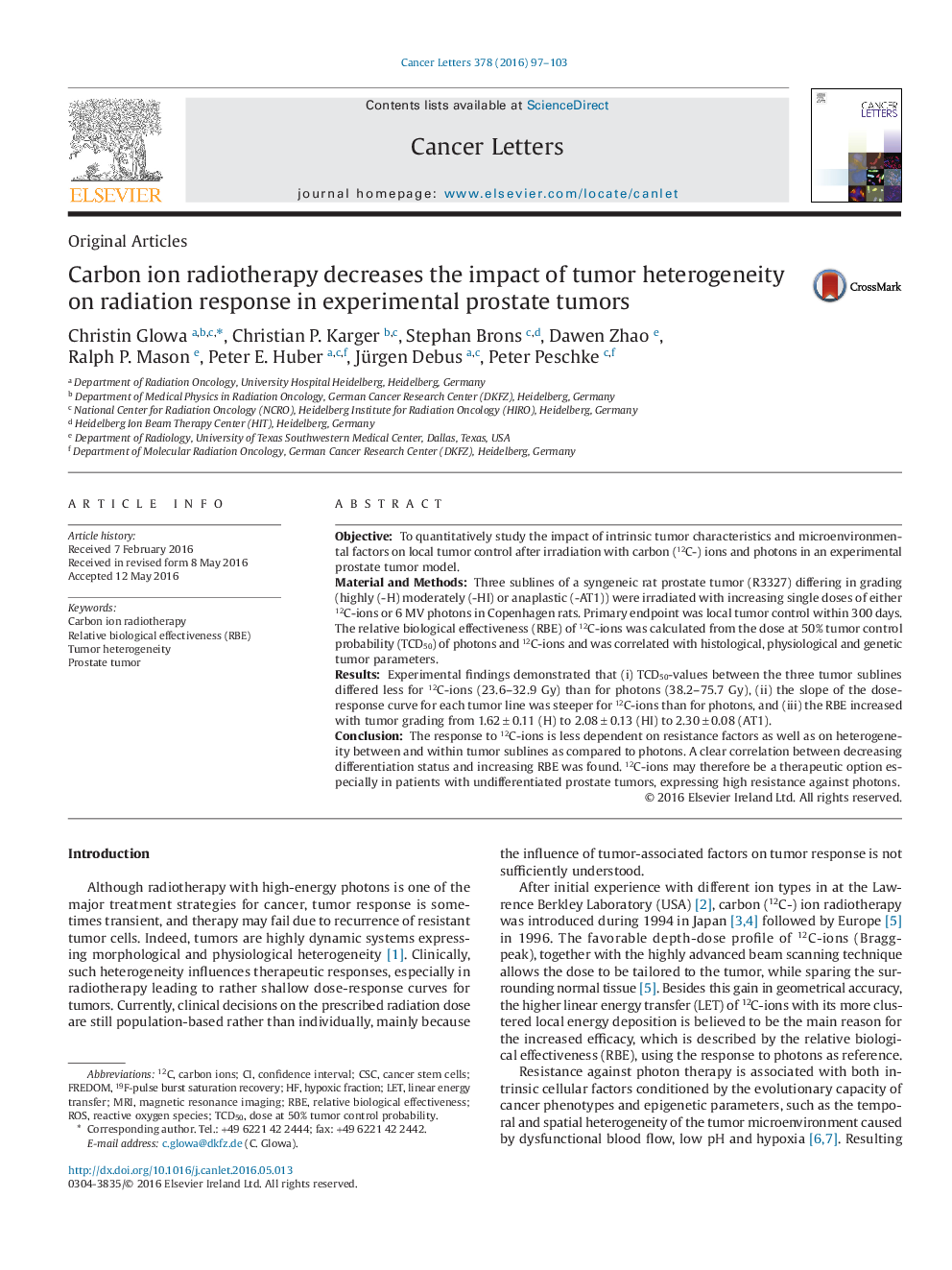| Article ID | Journal | Published Year | Pages | File Type |
|---|---|---|---|---|
| 2112262 | Cancer Letters | 2016 | 7 Pages |
•Compared to the same photon dose, carbon ions are generally more effective.•In tumors, the effect of carbon ions relative to photons increases with grading.•Therapeutic response to carbon ion therapy is less heterogeneous than for photons.•Carbon ions override most conventional tumor-associated factors of radioresistance.
ObjectiveTo quantitatively study the impact of intrinsic tumor characteristics and microenvironmental factors on local tumor control after irradiation with carbon (12C-) ions and photons in an experimental prostate tumor model.Material and MethodsThree sublines of a syngeneic rat prostate tumor (R3327) differing in grading (highly (-H) moderately (-HI) or anaplastic (-AT1)) were irradiated with increasing single doses of either 12C-ions or 6 MV photons in Copenhagen rats. Primary endpoint was local tumor control within 300 days. The relative biological effectiveness (RBE) of 12C-ions was calculated from the dose at 50% tumor control probability (TCD50) of photons and 12C-ions and was correlated with histological, physiological and genetic tumor parameters.ResultsExperimental findings demonstrated that (i) TCD50-values between the three tumor sublines differed less for 12C-ions (23.6–32.9 Gy) than for photons (38.2–75.7 Gy), (ii) the slope of the dose-response curve for each tumor line was steeper for 12C-ions than for photons, and (iii) the RBE increased with tumor grading from 1.62 ± 0.11 (H) to 2.08 ± 0.13 (HI) to 2.30 ± 0.08 (AT1).ConclusionThe response to 12C-ions is less dependent on resistance factors as well as on heterogeneity between and within tumor sublines as compared to photons. A clear correlation between decreasing differentiation status and increasing RBE was found. 12C-ions may therefore be a therapeutic option especially in patients with undifferentiated prostate tumors, expressing high resistance against photons.
